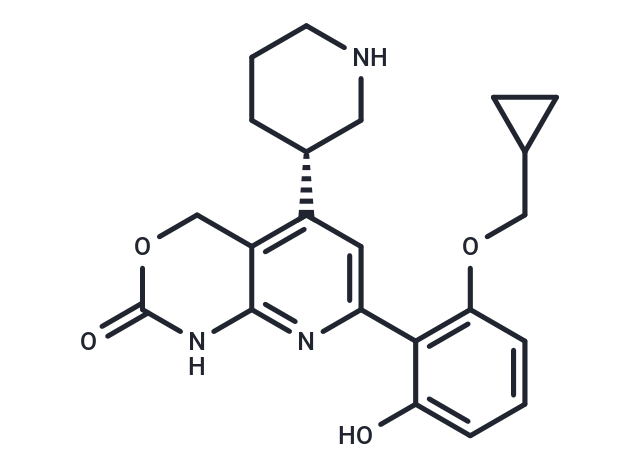Shopping Cart
- Remove All
 Your shopping cart is currently empty
Your shopping cart is currently empty

Bay 65-1942 free base is an ATP-competitive and selective inhibitor of IKKβ.

| Pack Size | Price | Availability | Quantity |
|---|---|---|---|
| 25 mg | $1,520 | 6-8 weeks | |
| 50 mg | $1,980 | 6-8 weeks | |
| 100 mg | $2,500 | 6-8 weeks |
| Description | Bay 65-1942 free base is an ATP-competitive and selective inhibitor of IKKβ. |
| In vitro | Administering Bay 65-1942 before ischemia significantly reduces the size of left ventricular infarcts compared to controls given a placebo. This effect is evident at every measured interval, with notable reductions in the infarct-to-area-at-risk (AAR) ratio when Bay 65-1942 is administered before ischemia, at reperfusion, and after 2 hours of reperfusion, showing significant differences when compared with the placebo group (P<0.05 for each comparison). Furthermore, animals pretreated with Bay 65-1942 exhibited substantially lower creatine kinase-MB (CK-MB) levels, indicating less cardiac muscle damage, compared to those not receiving the compound prior to ischemia-reperfusion (IR), highlighting its protective role against heart tissue damage (P<0.05 vs. placebo). |
| In vivo | AZD6244 and BAY 65-1942 demonstrate synergistic inhibition of cell viability at the dose combination (5 μM AZD6244+10 μM BAY 65-1942), which correlates with IC75 (CI?=?0.48±0.01). AZD6244 and BAY 65-1942 treatment induces 2- and 1.3-fold caspase 3/7 activation, respectively, compared to the DMSO-treated cells. Treatment with a combination of AZD6244 plus BAY 65-1942 leads to a 3.2-fold increase in caspase 3/7 activity[2]. Inhibitors of MEK (AZD6244) and IKK (BAY 65-1942) are used at their IC50 concentrations, as determined by a 48 hour MTS assay, which achieve sufficient inhibition of kinase activity. MYL-R cells are treated for 24 hours with AZD6244 (5 μM), BAY 65-1942 (10 μM), or a combination of these inhibitors at the same concentrations. Synergism is also indicated at the IC50 (CI?=?0.56±0.09) and IC90 (CI?=?0.46±0.02) dose combinations reported by the software (CI values are the mean of three independent experiments, ± standard deviation). |
| Molecular Weight | 395.45 |
| Formula | C22H25N3O4 |
| Cas No. | 600734-02-9 |
| Relative Density. | 1.286 g/cm3 |
| Storage | Powder: -20°C for 3 years | In solvent: -80°C for 1 year | Shipping with blue ice. |

Copyright © 2015-2025 TargetMol Chemicals Inc. All Rights Reserved.